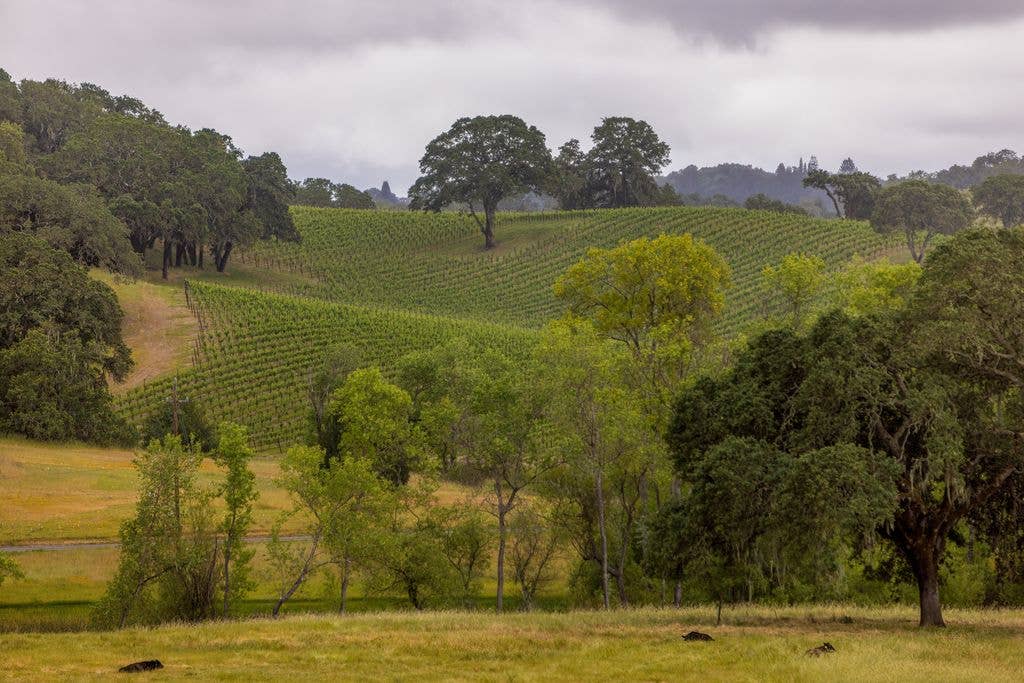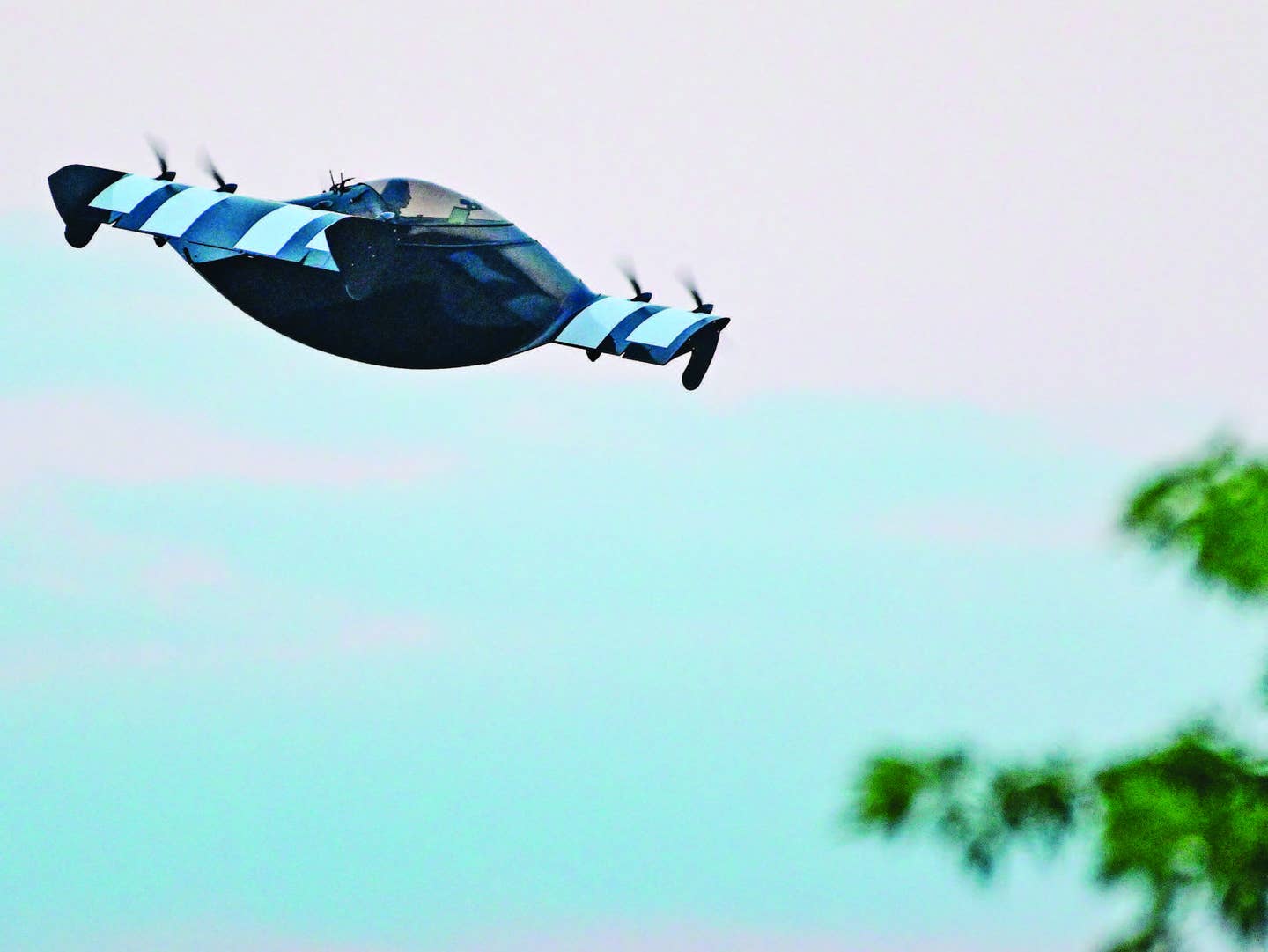Flying the Lifestyle
A leader in Sonoma’s hospitality industry makes a business case for the Cessna Citation M2 and Gulfstream GIVSP—and a grass-strip companion.

Jordan Vineyard and Winery is located in Alexander Valley American Viticultural Area in Sonoma County, California. [Credit: Stephen Yeates]
The mustard tones of the Jordan Winery manor house echo the brushy yellow herb that peppers the vineyards of Sonoma County in the springtime. In her pursuit to evoke the chateaux of France that she loves, Sally Jordan chose the color as one of hundreds of design elements that come together to give guests the feeling of a grande maison in Provence, instead of an estate in northern California.
When he took ownership of the winery from Sally and his father, Tom, in 2007, John Jordan kept his mother’s French aesthetic in place, because it had worked so well for the winery and the hospitality-focused company that encompasses it.
But Jordan’s passion clearly lies beyond the wine business. It's apparent from the moment you ask him what role aviation—and especially being a pilot—has played in his life. That's yellow too, Cub yellow.
A Pilot First
“I’m not strictly a wine guy—I did not grow up doing wine at all,” Jordan says. “I didn’t go to school for it.” Instead, he holds an undergraduate degree in economics, a law degree, and an MBA. He joined the U.S. Navy as a non-flying naval officer, and then went to work as an attorney. “To this day, I can’t claim to be an expert on wine or winemaking—I’m fortunate to have wonderful people here who are. But flying, I’ve done since I was 17.”
He soloed at 17 at the Santa Rosa Airport (KSTS) and then “banged out all the ratings.” He never wanted to pursue a career as a professional pilot, but he always enjoyed obtaining credentials. "I’m entrepreneurial and have many other interests.”
To this end, he’s notched his airline transport pilot certificate with a series of Gulfstream and Citation type ratings—among others—plus an instructor certificate.
He caught the bug early, as a lad. “I built a lot of model airplanes when I was little, always liked them,”he says. His favorites were World War II models—the warbirds. But his own airplanes, he chose for their practicality. “I like airplanes that are very predictable. I use them as a means to an end too."
Lift to Meet the Mission
Jordan chose his current duo of bizjets for their complementary capabilities, with the Cessna Citation M2 typically used for shorter missions: “My mom lives in Santa Barbara… every month I go pick her up, and a couple of days later, take her home.” The Gulfstream GIVSP meets his needs for long, overwater legs, such as to the Big Island of Hawaii, and carrying more passengers. However, sometimes he’ll take the M2 to Florida, and sometimes he uses the GIV. “It’s kinda fun to pedal across the country by yourself. I kinda like that," he says. The M2 is the right price for shorter trips that he mostly flies alone.
“The M2 is single pilot, so I fly that by myself. I mean, that’s like my car. I fly that once or twice a week. The GIV [I fly] less often, because that does a different mission.” Operating costs (from Conklin & deDecker) make a difference: While the M2 runs roughly $1,723 per hour based on 600 hours per year, the GIVSP takes about $6,200 an hour. For the business, both mounts work similarly. “I go visit accounts, like restaurants—that’s a way of thanking them for their business. [The jets give] me the ability to do something in a day, or in a 12-hour period that you couldn’t [otherwise]. Especially living here, where the airline service is intermit-tent. It would be impractical to do.
“I also fly customers here [to the winery] for a visit. We do a lot of that. Restaurants, hotels, bed and breakfasts, casinos—there’s a lot of that each year. There’s also press, travel writers, wine writers—it’s easier to get them to come here and write if they don’t have to suffer too much to do it.”
Jordan Winery hosted several events in June to celebrate the company's 50th anniversary, and the aircraft allowed Jordan to take a greater number of staff along. "That’s staff intensive, so that’s a lot of people… alot of stuff that has to go," he says. "[The aircraft] allow us to more effectively use staff time and reduce wear and tear on them.” The winery has a corporate pilot employed to crew the Gulfstream with Jordan, as well as a maintenance technician, should anything breakdown and need repair.
Jordan had a Gulfstream GIII before the GIV, and he felt that was “the worst type rating” of all that he’s completed. “All of the redundancy of a modern jet, withall of the complexity, without the automation.”
Cessna Citation M2
| Base Price: | $4.7 million |
| Powerplants: | Williams International FJ44-1AP-21 turbofans (2) |
| Seats: | 5 + 1 |
| Max Cruise Speed: | 404 ktas |
| Range: | 1,300 nm/1,550 nm Gen2 |
That’s changed with the newer models, including the Citations. “[On the M2] I like the Garmin avionics—I really appreciate what Garmin has done, especially as a single-pilot jet [flying] in the weather, and especially in complicated airspace like Southern California. If you really know it, it’s fantastic. But it’s like anything else in avionics—if you don’t know it...”
Jordan has owned a Piper Cub, which he has flown from the estate’s private strip. He had the turf strip constructed on the property, and it measures 1,300 feet by 80 feet. “It’s legit, but it’s not on the sectional,” because he wants to maintain its private, winery-only operations.
To make use of it now, he’s switching gears. “I’ve got a Maule on order, a tricycle gear one… [I] should get it this summer," he says. "I went with the tricycle gear—I had a Cub for a while, and you know, a little crosswind on the pavement and that can go… and you can’t really take anybody anywhere. [The Maule] is an airplane that I can fly out of here, pick somebody up in Oakland or Sacramento. It’s an airplane—it’s not a toy that flies.” He's looking forward to taking delivery of it later this year.
Lifelong Learning
Jordan finds aviation engaging for the level of detail it offers. “I’m interested in the math behind high-speed and high-altitude aerodynamics, how the center of lift shifts and how you can have Mach tuck—that’s obviously a big issue in jets, particularly in swept-wing ones,” he says.
“All of the discussions about icing, icing formation—[there’s] a lot of lore, a lot to be learned about all that, over the last five decades,” such as the propensity of the tail to stall first when buildup occurs. “You never know when these little tidbits of knowledge are going to [be important]. I’m a nerd, and I love the details behind all of that,” he says.
Jordan also talks about how instrument flying has evolved during his time on the flight deck. “We all grew up on NDBs and VORs and ILSs , and now there are LPVs—that’s a lot of fun, especially [using] the Garmin [suite]. In Santa Rosa, we have an RNAV approach—I don’t care for it because it’s coming from the wrong way. It’s generally for [Runway] 14, but if you’re landing on 32, there’s the ILS—and I’m generally coming from the south and the east so I prefer that.
“Look how complex STARs and SIDs have become. If you look back at how they were when we [first started flying IFR], the crossing restrictions were different—it was not nearly as tight, or as complex as it is now.”
He doesn’t view flying as an escape. “I pay attention to what I’m doing when I’m flying… because I enjoy the technical aspects of flying. Planning [the flight], flying it, trying to get everything just perfect and optimized—for me that’s fun… People who think, ‘Oh that’s your getaway time,’ as a flight instructor, I think maybe you need to rethink some things. In any airplane, you need to be paying attention to what you’re doing."
A Lifestyle Change
Jordan took on the hospitality business as a way to change up his lifestyle after practicing as an attorney for many years. Now that the winery has turned 50—and Jordan along with it—he sees the results. “I love hospitality," he says. "No two days are the same. There’s plenty to do… we make a cabernet and a chardonnay. We don’t have volumetric aspirations, but to continue to try to be the best in our lane is a challenge that has to be met every year.
“I like to say that at Jordan, we do three things: cabernet, chardonnay, and hospitality. You have to be on top of it—I have 100-some-odd people here. Everything from people who run the ranch side to hospitality, to the chefs, to social media, to accountants, to winemakers—we have our own facilities department, so there’s so much that goes on here… you’re continually trying to get better at everything you do.”
The winery has a different business model than other estates in Napa and Sonoma counties—it doesn't have a wine club. Instead, customers earn points based on the volume of wine they purchase over time. They can use those points to score benefits, such as an overnight stay in one of the estate’s luxurious French-country-inflected suites.
Jordan keeps his hand in other enterprises as well—he’s a national security analyst for cable news on Fox and NewsMax. He speaks Russian and German fluently, and he uses his Navy experience to comment on current affairs from his TV studio at the estate. “The TV portion is a major part of my day,” Jordan says, “because I have to read and monitor [news] in those languages every day.”
He adds, “International conflict in the 21st century is not binary, [as in] peace or kinetic conflict. Conflict exists in several domains, cyber, economic, information warfare, political warfare, espionage, as well as various grades of kinetic warfare. Sometimes you can be nominally at peace—you’re not exchanging bullets with a foreign power, but you are at war. You are engaged in conflict. So [I can understand] how these different domains of conflict interact… because of the different credentials I have—business, economics. Also, [I’m] on the board of overseers at Stanford’s Hoover Institution for War, Revolution, and Peace.”
That mental engagement takes us back to why Jordan’s interest in aviation lives on after more than 30 years of being a pilot. “What I enjoy most about flying is the lifelong learning part of it.

Sign-up for newsletters & special offers!
Get the latest FLYING stories & special offers delivered directly to your inbox






